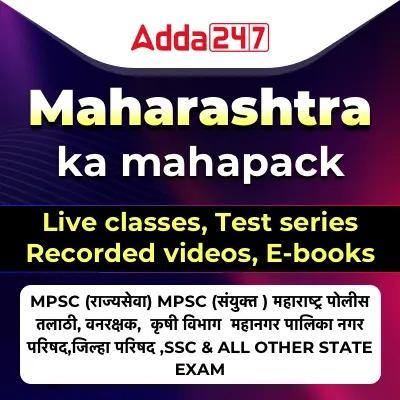Table of Contents
Error Detection
Points to remember :
- Don’t give specific pauses to the slashes. When you read the sentence with continuity, you often find the errors simply by doing so. While taking your test of error detection, this thing should be kept in mind that you have limited time in which you have to spot the errors. So pausing at the slashes or giving specific time to that breaks will hinder your proficiency.
- While spotting the errors, you shouldn’t forget that examiner is testing your aptitude. In such case, to apply conventional methods would be quite unhealthy. Try to use elimination method. By doing so, one can easily find out the answers to their questions even if they don’t have that much deep knowledge of grammar.
- Always Remember, the questions given to you are the questions of Error Detection, not the Error Correction, hence, don’t waste too much time on finding the reason of error. You just need to find out the part of the sentence which contains error and move further.
- Sometimes there are errors of spell check which come seldom in the exams. Just because we have the habit of finding grammatical errors only, we often develop a tendency to ignore errors related to spell check which rarely but do come in exams. Try to figure out those errors too. This will definitely save your time.
- Above mentioned points are the key fundamentals that you should adhere to in order to score good in English Language Section.
Now look at the points related to the grammatical portion, and for which you should have basic knowledge of English.
1. Be a watchdog to Subject-verb Agreement: It is observed that almost 90% questions are framed from the subject-verb agreement. So this portion should be thoroughly gone through by the aspirants as this includes questions related to tenses, prepositions, verbs, nouns, and almost each and every part of grammar which we prepare for verbal. Thus, the rules and formulas of verbal should be learnt by-heart to make it as easy as possible.
2. Don’t Forget: Don’t forget to detect the correct form of verb used in the given sentence. Many questions are framed from this section. Verbs similar to spell or pronounce or which don’t exist but often given in a way to puzzle, are generally kept in order to create confusion. Thus, this section should not be ignored in order to avoid confusion. For example:
Then his eyes overflown with tears, and he fell on his knees before the king. ( ×)
Then his eyes overflowed with tears, and he fell on his knees before the king. (√)
3. Check for conjunctions: The correct use of conjunction should always be checked as the two conjunctions can’t be used in the same sentence unless and until correct format is applied. For example: as….as; so….that….these are the correct combinations but as….so is incorrect.
4. Never remain aside from vocabulary: It is mandatory to work on vocabulary to maximize your score as many words come in the exams that may hinder your understanding. So it is obvious that to crack this section, one must have a good vocabulary.
5. A close watch to Collective Nouns: Collective nouns shouldn’t be overlooked as this is one of the major sections of a sentence which contains errors. Singular and Plural forms should be kept in mind considering it to be one of the most important parts that defines the type of noun.
6. Syntax Errors: This might be the trickiest aspect to understand and/or convey. If grammar is the basic structure, syntax is the nuanced juxtaposition of words and phrases. For Example:
“Not all birds are eagles,” is different from, “All birds are not eagles.” (The latter’s not quite true, is it?)
Reading Comprehension
To solve the reading comprehension questions, one must be able to:
- Recognize the main points of the text.
- Respond to questions based on the presented text.
- Create an understanding of the passage’s tenor and tone.
- Understanding what you read is the RC section rule that is most frequently followed. If you have the ability to read quickly, it will be beneficial for you. However, comprehension is always more important than quickness. Here are some suggestions for studying for exams.
Even if the passage’s length or terminology may seem challenging to a candidate, once the applicant begins reading the paragraph, understanding it and providing answers become much simpler.
The passage contains the solutions, which are simple and not tough to find, thus scoring the passage questions is not difficult. To master how to quickly scan the passage and respond to the pertinent questions, candidates must make sure they practice answering comprehension questions repeatedly.
Important Rules to Follow While Answering RC Passages-
- It is crucial to understand the author’s main point.
- Identify the main justifications offered to support that claim.
- Determine the tone of the writing, which may be satirical, inquisitive, courteous, condescending, etc.
- Look for negative conjunctions because these words will unmistakably show that the author’s tone has changed. Therefore, the author’s implication might not be what the introductory remark implies. Examples include However, even though, even though, etc.
- Check to see whether there are any words that cast doubt on the statement of truth, such as negative qualifiers. For instance, it appears, sort of, seems like, etc.
Tips To Answer the Reading Comprehension Questions
Given below are a few tips to answer the reading comprehension questions quicker and more efficiently.
- Reading the Questions First: It is advised that the applicant read the questions before moving on to the passage. This will enable the applicant to identify the solution in less time.
- Don’t Make Any Assumptions: A vital element to remember for reading comprehensions is to avoid making assumptions. The only information that must be used to answer the questions is that which is provided in the passage.
- Answer the questions based on vocabulary first: Questions using antonyms and synonyms and other vocabulary-based concepts might be present. Answer these first because the applicant might not need to read the entire passage to respond. This would help you save time.
- Use the elimination method: Candidates frequently make mistakes in the English portion due to the unclear options provided. If a candidate is unable to respond to the question, they must begin removing possibilities until they arrive at the choice in which they have the greatest confidence.
- Enhance your reading abilities: Instead of reading every word in the comprehension, try focusing on the key words and phrases from the passage. You’ll gain some time savings from this.
- Pay attention to the first and last passages: The passage’s opening and conclusion are its most crucial parts, and they can assist you in answering questions like “Give a relevant topic for the section,” “State the passage’s tone,” and “Summarize the passage.”
Note: महाराष्ट्रातील सर्व स्पर्धा परीक्षांसाठी ऑनलाईन क्लास, व्हिडिओ कोर्स, टेस्ट सिरीज, पुस्तके आणि इतर अभ्यास साहित्य खाली दिलेल्या लिंक वर क्लिक करून मिळावा.
अड्डा 247 मराठीचे युट्युब चॅनल




